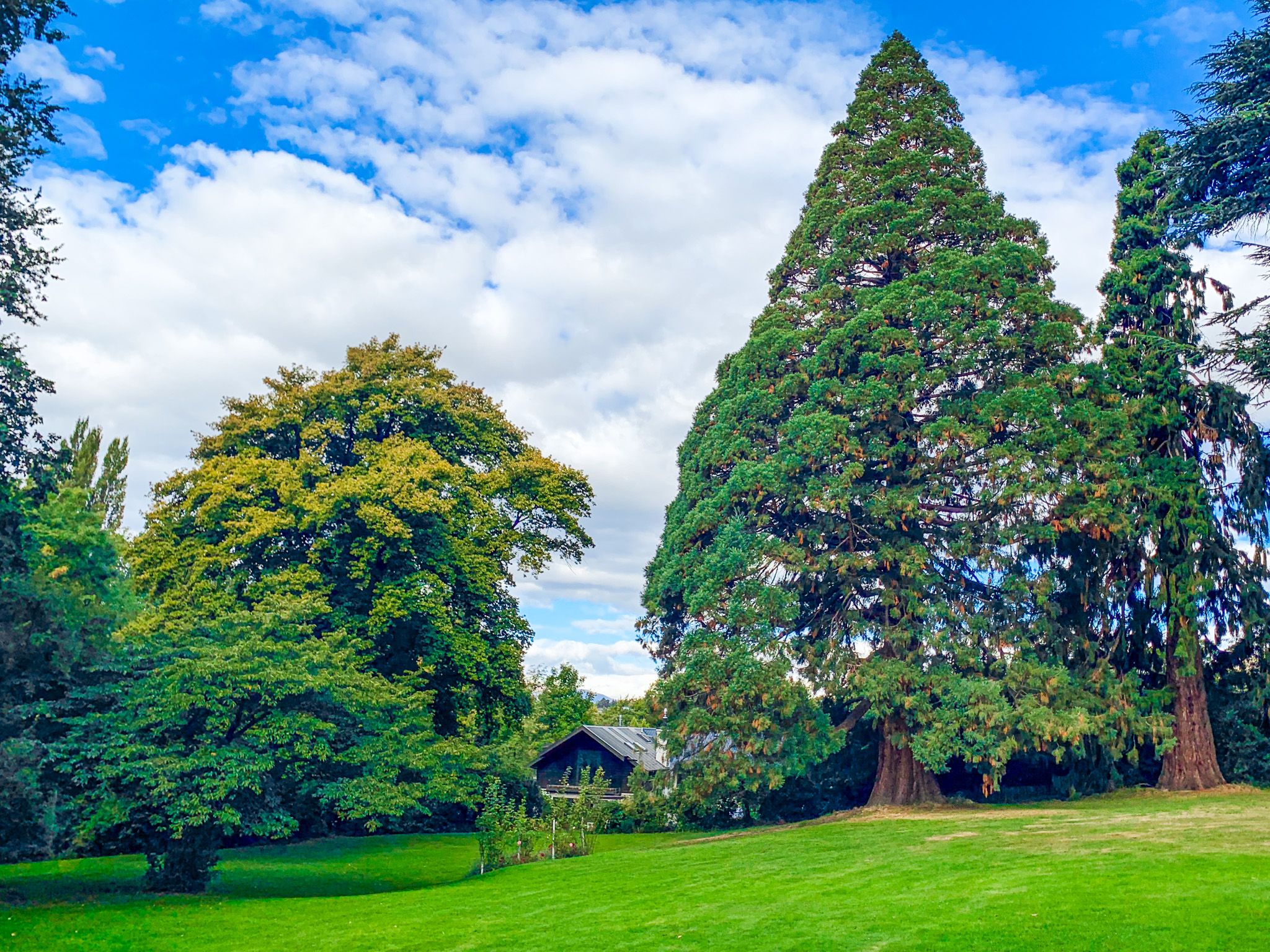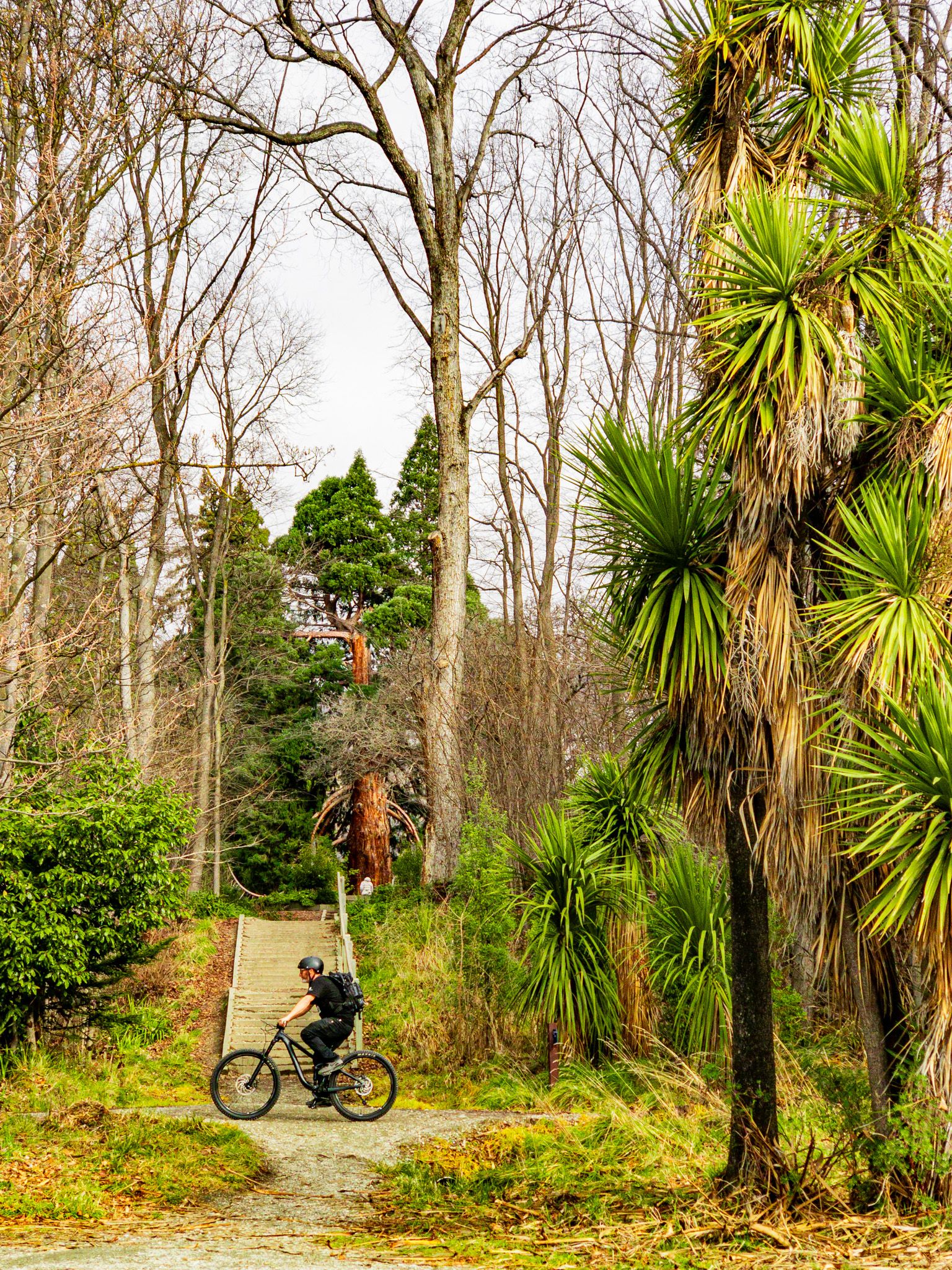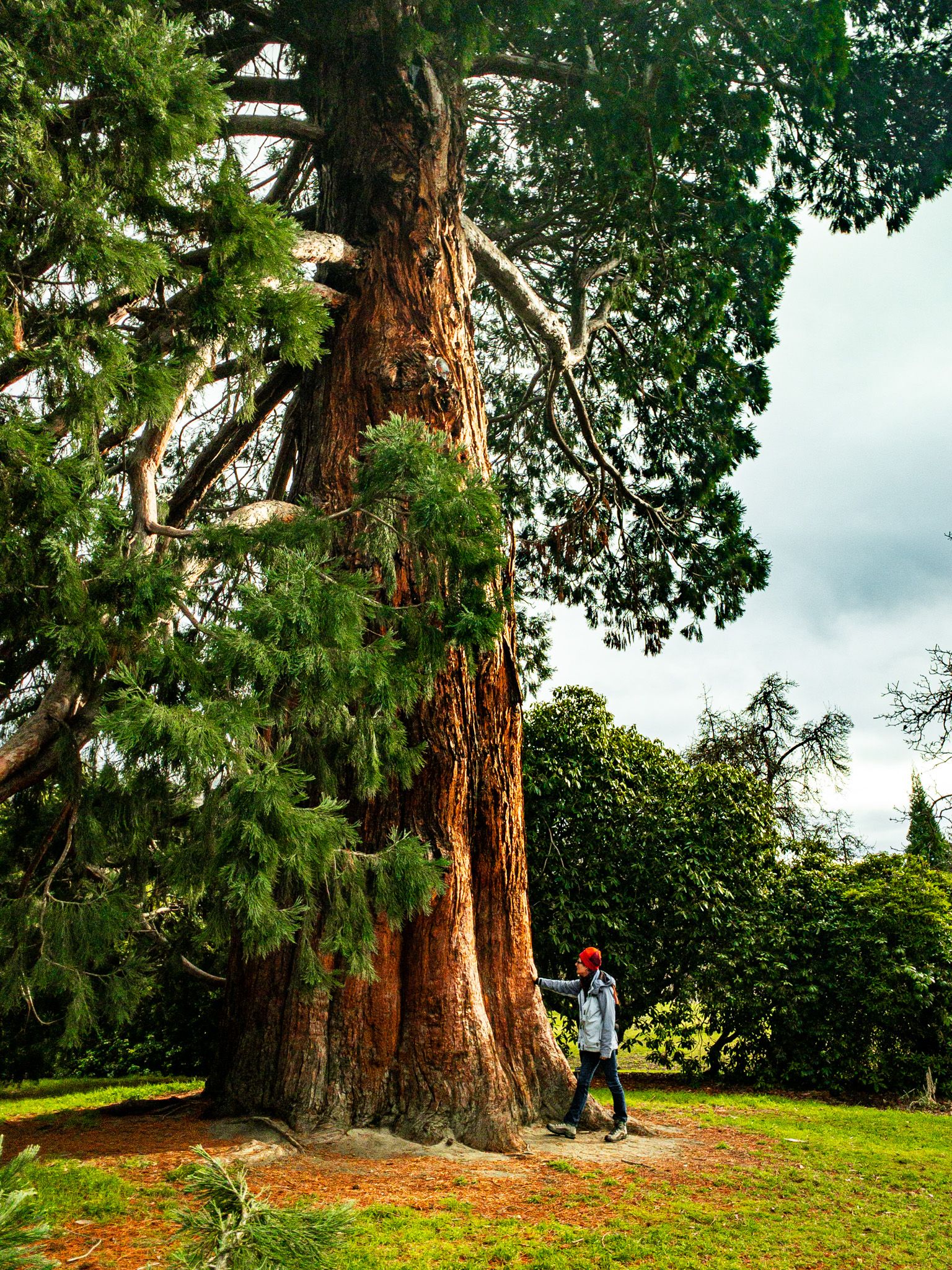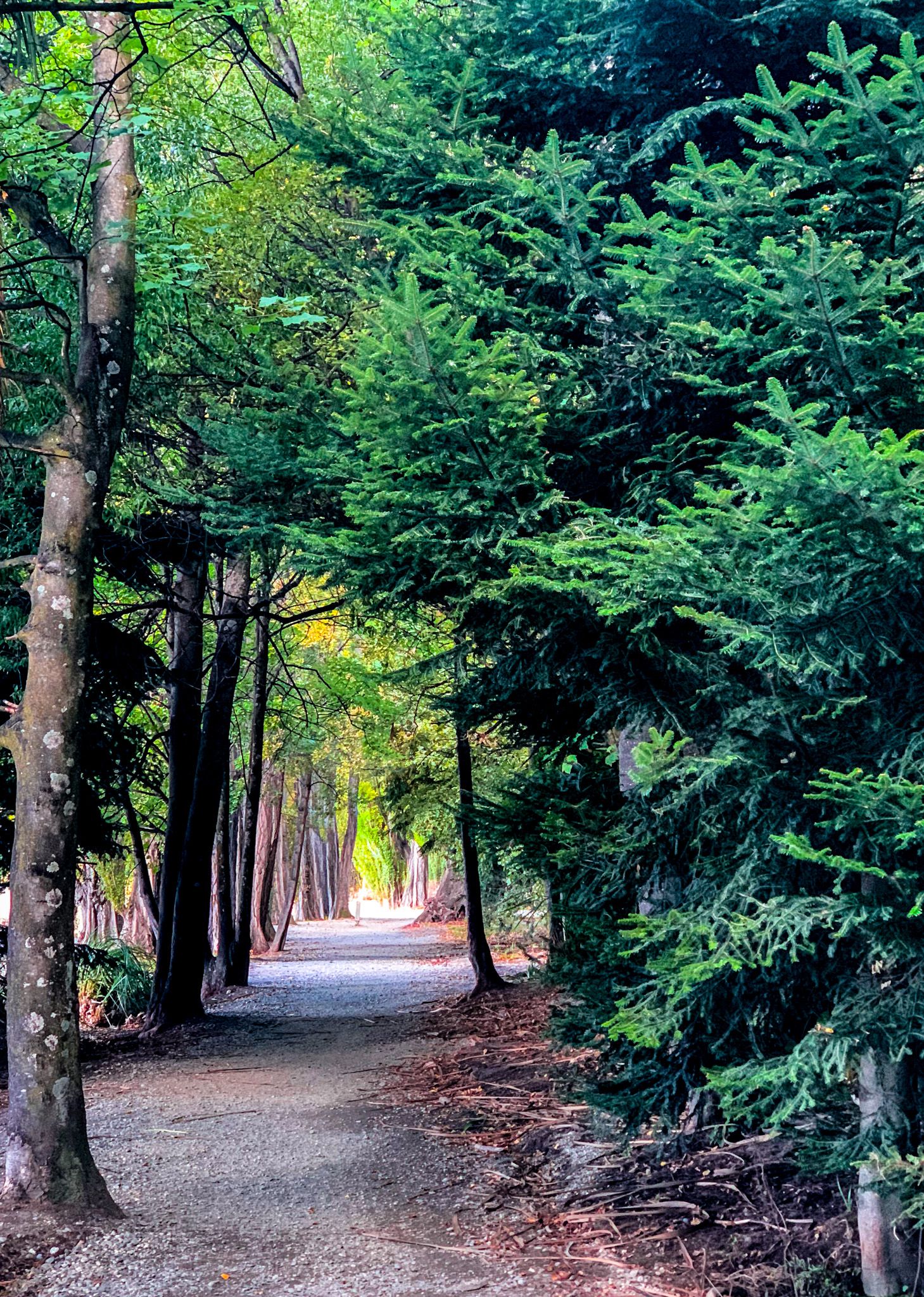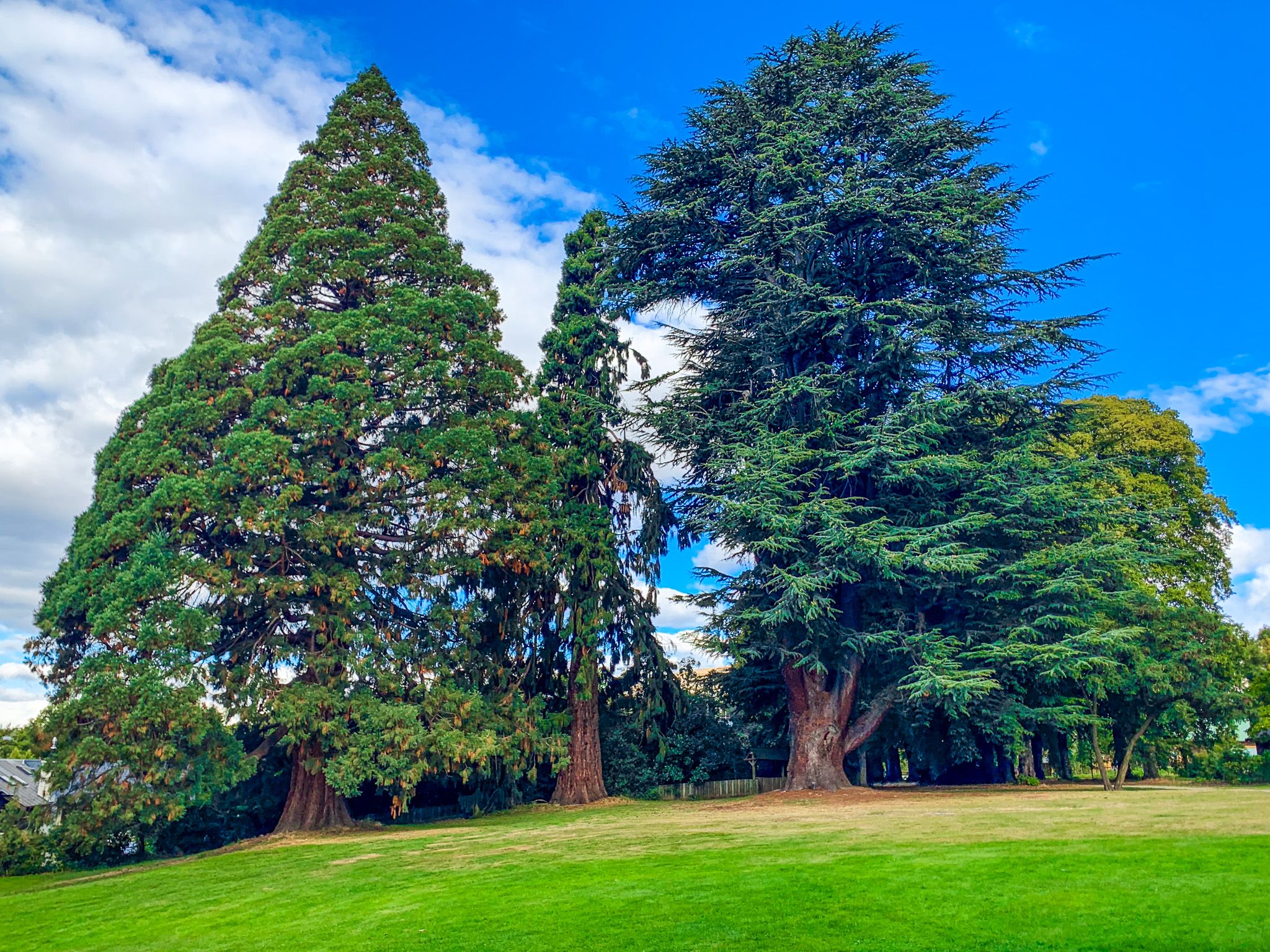There is little obvious early history around Wānaka, except for the Wānaka Station Park. Access is from Norman Terrace or Waterfall Creek Track, immediately behind That Wānaka Tree.
Wānaka was a very small town until the 1980s, and rapid development has left it with a mostly modern look. But dig a bit, and you can learn about the region's early settlement, dominated by enormous sheep farms or “stations”. The first station in the Wānaka area was centred near Albert Town in the 1850s. This was the only fordable place on the Clutha River. Two men, Robert Wilkin and William Thompson, followed and established Wānaka Station in 1859. This station occupied the west side of the lake, below Roys Peak and Mt Alpha to the Pisa Range, with 6,000 sheep. The homestead was situated just behind where the Wānaka Tree is today, at the west end of the Lakefront. Redwoods, sequoias and cedars were planted at some stage, and the survivors are now very big trees.
It is unclear how big Wānaka Station was, but in 1862, Wilkin and Thompson bought Glendhu Station from John Roy. In 1866, they sold the Mt Pisa block to RJ Loughnan and the rest of Wānaka Station was sold to Robert (or Henry) Campbell. The station was divided into five, still enormous, stations: Wānaka, Glendhu, West Wānaka, Mount Burke and Minaret.
Sir Percy Sargood and his wife Lucy bought Wānaka Station in 1912. He was keen on irrigating dry Central Otago, and in 1913, he planted 8,000 fruit trees to establish the Wanaka Orchard. It is not clear when or why the station was further broken up. Perhaps it started in the 1940s, but in any event, the land was subdivided over time, and the original homestead and sheds were left to ruin. The surrounding area became Wānaka Station Park as the town developed west of the Lakefront in the 1970s and 1980s. Wanaka Homestead, a boutique accommodation business beside the park, rescued and used some station homestead timber.
The park is just behind That Wānaka Tree. Walk from the beach through the rose arbour, with its 100-year-old heirloom roses, to the ruins, a playground, giant trees, an enormous rhododendron hedge, and some surviving fruit trees with free fruit in season. The redwood behind the arbour is particularly stunning.
